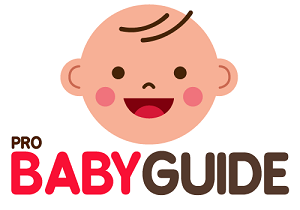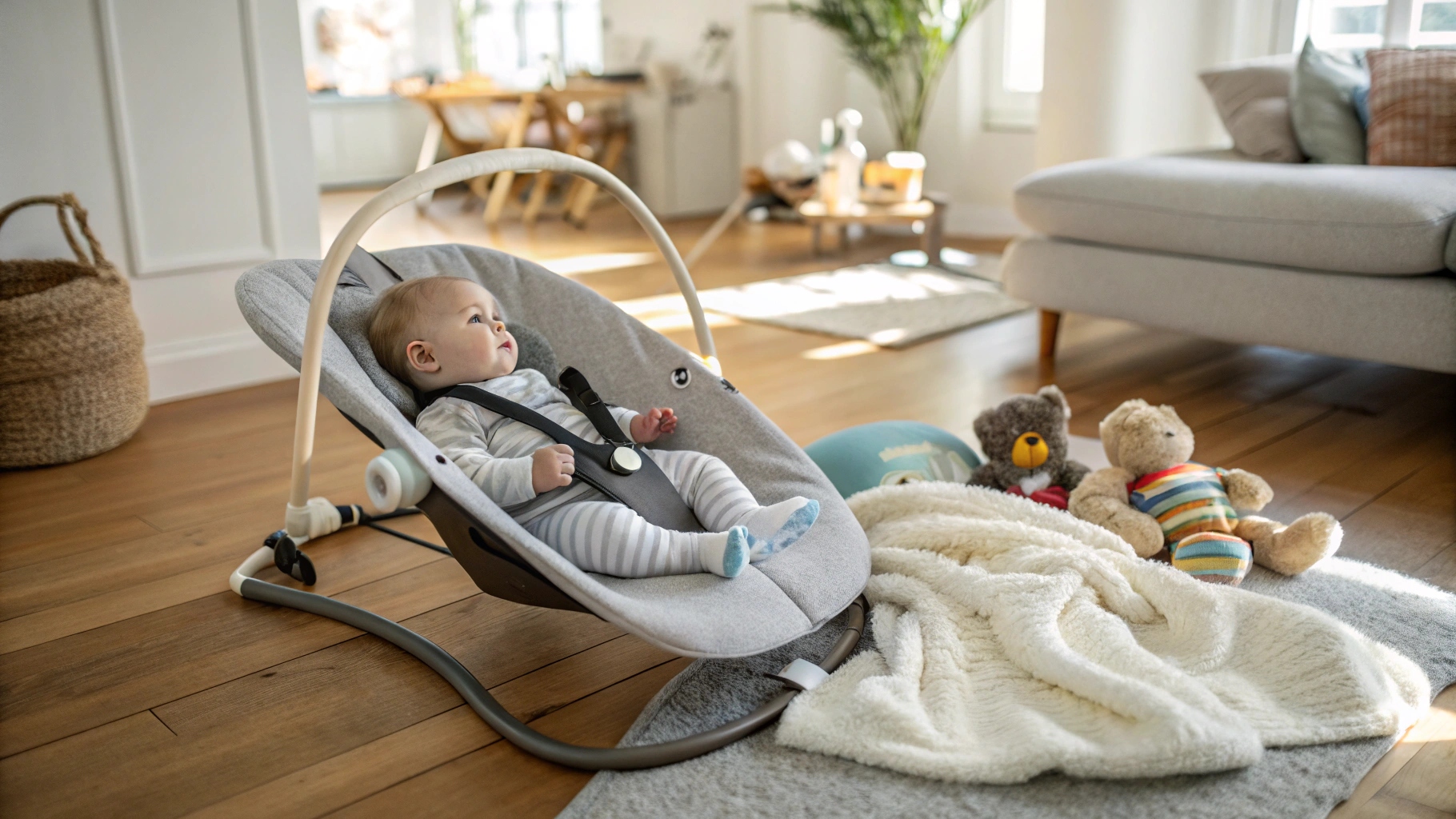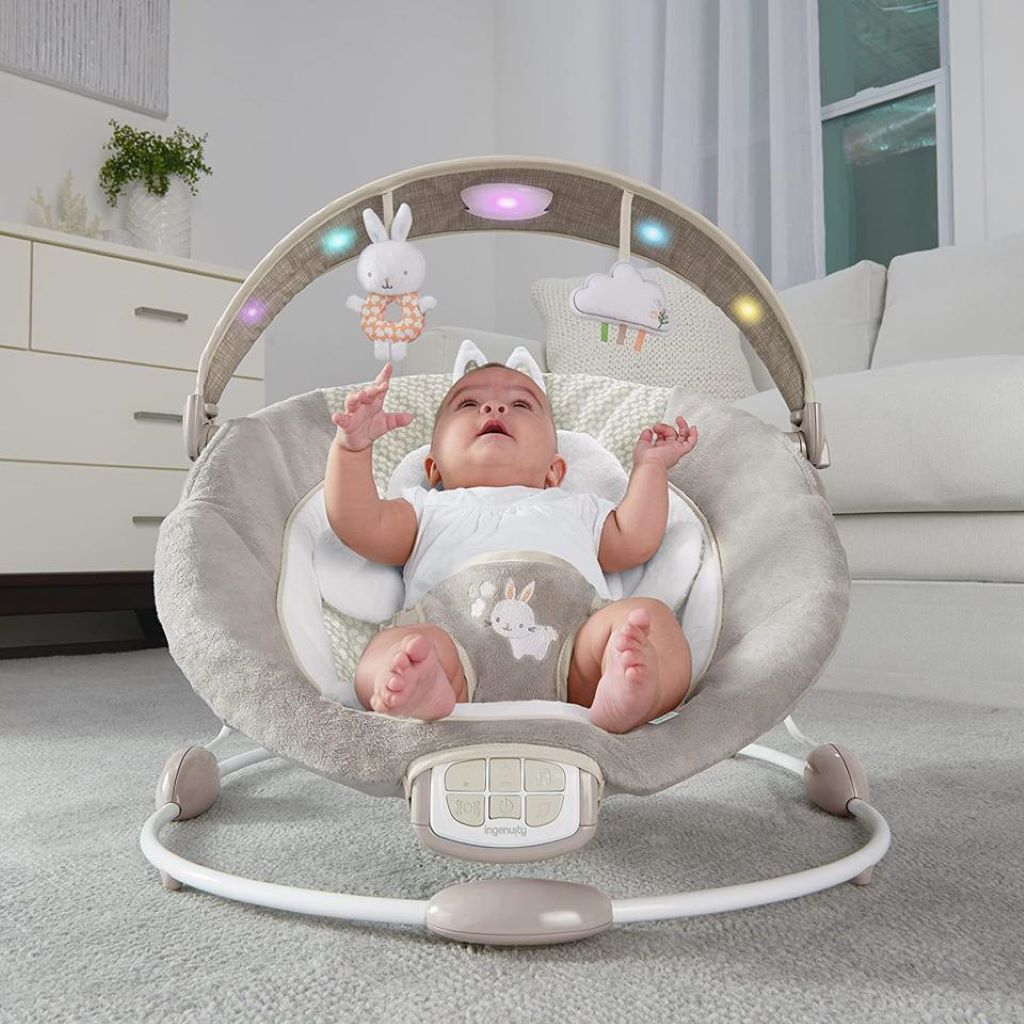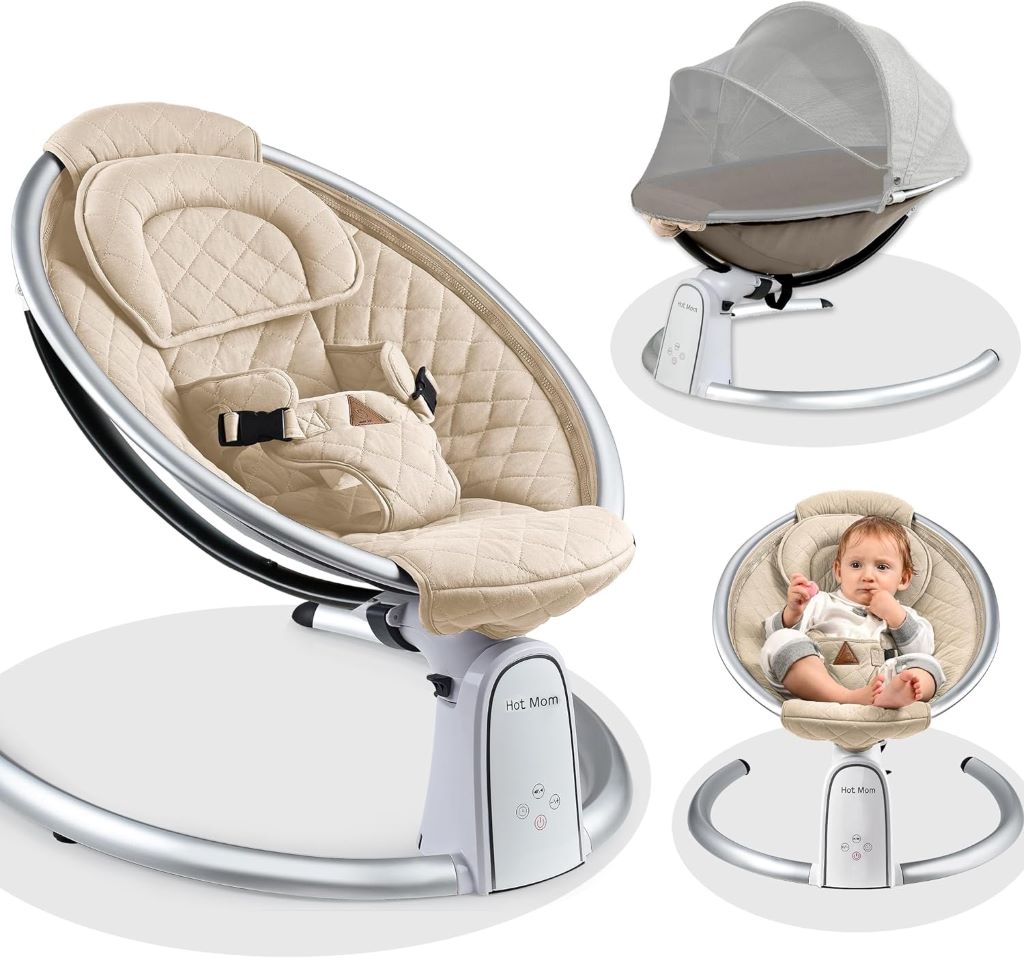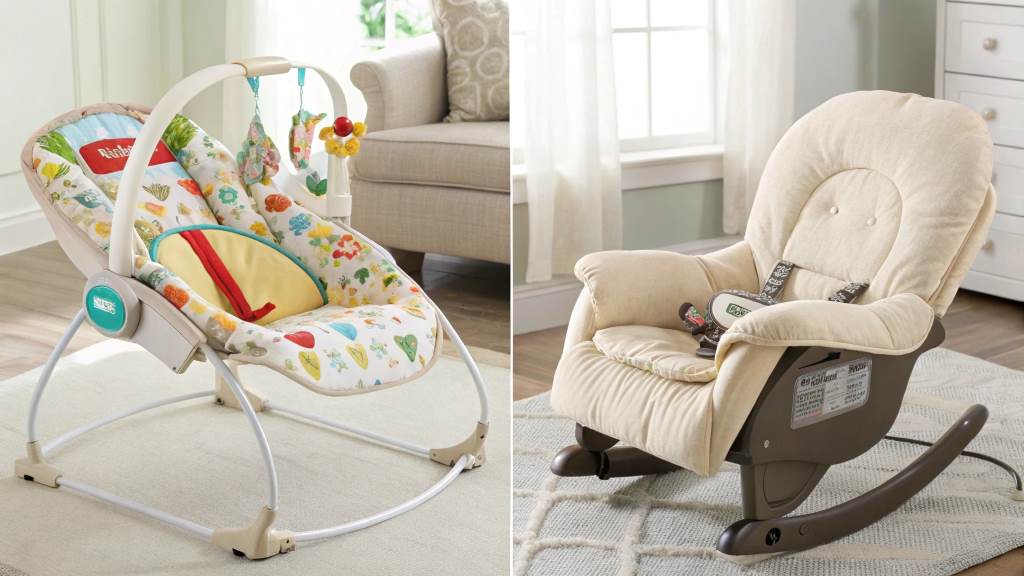The arrival of a newborn brings immeasurable joy, but also a whirlwind of questions and concerns. Among the myriad of baby products available, the baby bouncer often stands out as a seemingly convenient and comforting tool. However, a crucial question lingers in the minds of many new parents: are baby bouncers safe for newborns? This comprehensive guide delves into the nuances of baby bouncer safety, exploring the potential benefits and risks, providing expert recommendations, and addressing common parental concerns.
Understanding the Appeal: The Purpose and Potential Benefits of Baby Bouncers
Baby bouncers, typically featuring a fabric seat suspended on a frame, are designed to provide a safe and engaging space for infants. The gentle bouncing motion, often initiated by the baby’s own movements or a parent’s touch, can be soothing and entertaining. For busy parents, a bouncer can offer a temporary respite, allowing them to complete tasks while keeping their baby close and content. Moreover, some bouncers come equipped with features like toys, music, and vibrations, stimulating sensory development and encouraging motor skills. The upright position can also be beneficial for babies with reflux, helping to ease discomfort after feeding.
However, it’s crucial to acknowledge that Traditional Baby Bouncers are not intended to replace human interaction or dedicated playtime. They should be used as a temporary aid, not a substitute for active engagement with your newborn.
The Crucial Question: Safety Considerations for Newborns and Baby Bouncers
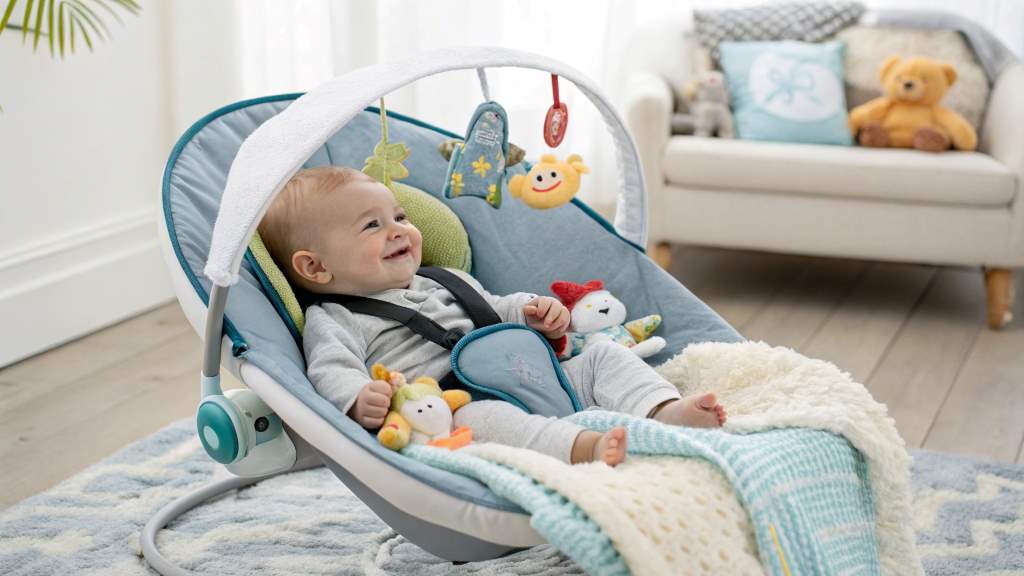
While baby bouncers can offer certain advantages, their safety for newborns is a subject of ongoing discussion and debate. Several factors contribute to potential risks, particularly for very young infants.
- Neck and Spine Development: Newborns have limited neck and head control. Their delicate spinal structures are still developing, making them vulnerable to injury if subjected to excessive or prolonged bouncing. The upright position in a bouncer can place strain on their neck and spine, especially if they lack the muscle strength to maintain proper posture.
- Hip Dysplasia: Prolonged use of baby bouncers, particularly those with narrow or poorly designed seats, can contribute to hip dysplasia. This condition occurs when the hip joint doesn’t develop properly, potentially leading to pain and mobility issues later in life. Ensuring the bouncer seat allows for proper hip positioning, with the baby’s hips and knees bent and spread apart, is crucial.
- Restricted Movement and Development: While bouncers can provide temporary entertainment, excessive use can limit a newborn’s opportunity for free movement and exploration. Tummy time and floor play are essential for developing motor skills, strength, and coordination. Relying too heavily on a bouncer can hinder these crucial developmental milestones.
- Suffocation and Falls: Although less common, there is a risk of suffocation if a baby’s face becomes pressed against the fabric of the bouncer. Falls can occur if the bouncer is placed on an unstable surface or if the baby is left unattended. Always ensure the bouncer is placed on a flat, stable surface and never leave your newborn unattended in it.
- Overstimulation: Many bouncers have lights and sounds. While these can be entertaining, too much stimulation can overwhelm a newborn, leading to fussiness and difficulty sleeping.
Expert Recommendations: Guidelines for Safe Baby Bouncer Usage
To minimize risks and ensure safe use, adhere to the following expert recommendations:
- Age and Weight Restrictions: Always follow the manufacturer’s age and weight guidelines. Most manufacturers recommend waiting until your baby has developed sufficient neck and head control, typically around 3-4 months. However, it is always best to consult with your pediatrician.
- Limited Usage Time: Restrict the amount of time your newborn spends in a bouncer. Experts recommend limiting sessions to no more than 15-20 minutes at a time, and no more than a few times a day.
- Proper Positioning: Ensure your baby is properly positioned in the bouncer. Their back should be supported, and their hips and knees should be bent and spread apart. Use rolled-up blankets or towels to provide additional support if needed.
- Supervision is Key: Never leave your newborn unattended in a bouncer. Always keep them within sight and reach.
- Stable Surface: Place the bouncer on a flat, stable surface away from edges, stairs, and other potential hazards.
- Regular Inspection: Regularly inspect the bouncer for any signs of damage, such as torn fabric, loose straps, or broken parts.
- Choose a Safe Model: Select a bouncer that meets current safety standards and has a wide, stable base. Look for models with a five-point harness and a seat that provides adequate support.
- Avoid Using Bouncers for Sleep: Baby bouncers are not designed for sleep. Never allow your newborn to fall asleep in a bouncer. Always transfer them to a crib or bassinet for naps and nighttime sleep.
- Consult Your Pediatrician: If you have any concerns about using a baby bouncer, consult your pediatrician for personalized advice.
People Also Ask (FAQs)
Q: Can I use a baby bouncer for a newborn right after birth?
A: It is generally not recommended to use a baby bouncer immediately after birth. Wait until your newborn has developed sufficient neck and head control, typically around 3-4 months. Consult with your pediatrician for specific guidance.
Q: How long can a newborn stay in a baby bouncer?
A: Limit sessions to no more than 15-20 minutes at a time, and no more than a few times a day.
Q: Are vibrating baby bouncers safe for newborns?
A: Vibrating bouncers can be soothing, but use them in moderation. Excessive vibration can be overstimulating. Always follow the manufacturer’s guidelines and consult your pediatrician.
Q: Can a baby bouncer help with reflux?
A: The upright position in a bouncer can help ease reflux symptoms. However, it’s not a substitute for proper medical care. Consult your pediatrician for advice on managing reflux.
Q: What are the signs of overstimulation in a newborn?
A: Signs of overstimulation include fussiness, crying, arching their back, turning away, and difficulty sleeping.
Q: How do I choose a safe baby bouncer?
A: Choose a bouncer that meets current safety standards, has a wide, stable base, a five-point harness, and a seat that provides adequate support.
Q: Are second-hand baby bouncers safe?
A: Second-hand bouncers can be safe if they are in good condition and meet current safety standards. Inspect them carefully for any signs of damage.
Conclusion: Balancing Convenience and Safety for Your Newborn
Baby bouncers can be a helpful tool for parents, providing temporary entertainment and comfort for their newborns. However, it’s crucial to prioritize safety and use them responsibly. By understanding the potential risks, following expert recommendations, and consulting with your pediatrician, you can make informed decisions about baby bouncer usage. Remember that baby bouncers are not a substitute for human interaction, floor play, and tummy time. Prioritize active engagement with your newborn, providing them with the nurturing and stimulation they need for healthy development. Ultimately, the decision to use a baby bouncer should be based on a careful assessment of your newborn’s individual needs and your comfort level. Always err on the side of caution, prioritizing your baby’s safety and well-being above all else.
